Fisher AD-Z1 CD
player / Transport
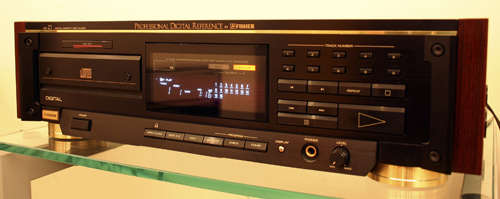
May 2009
This is a really
special player.
This company was
(I think, I may be wrong) the upper market brand of Sanyo. A Lexus so
to speak.
The picture of
the player send the shiver up my spine: WOW ! I want it!
Unfortunately -
ebay worldwide haz zero Fisher players.
So - first
conclusion - it is RARE.
After seeing it
in reality at friend's, I was even more excited: it looks like a bolid,
it is massive, heavy, with very thick wooden cheeks, golden ornaments
and letters, shiny LEDS etc. It is the culmination of end-of-eighthties
High End. Like Sony CDP-557 ESD, Grundig CD-9009, Kenwood DP-8010, etc.
The owner had a
request to improve it as a transport, ignoring the dac.
OK, challenge
taken.
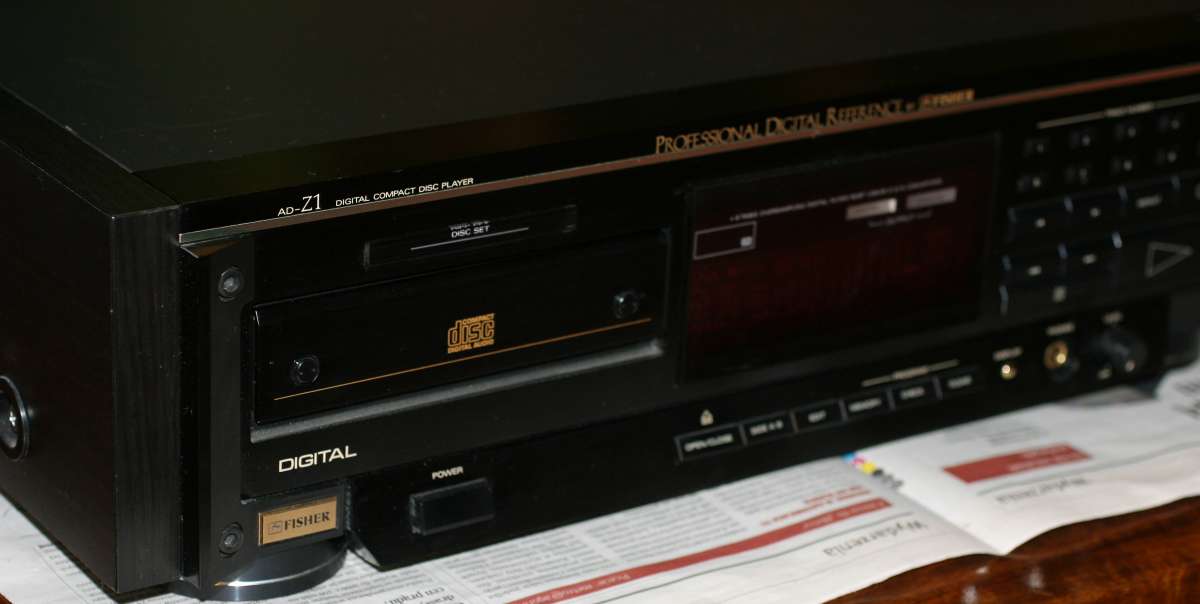

Above: My all
time favourite keypad ! Ideal !
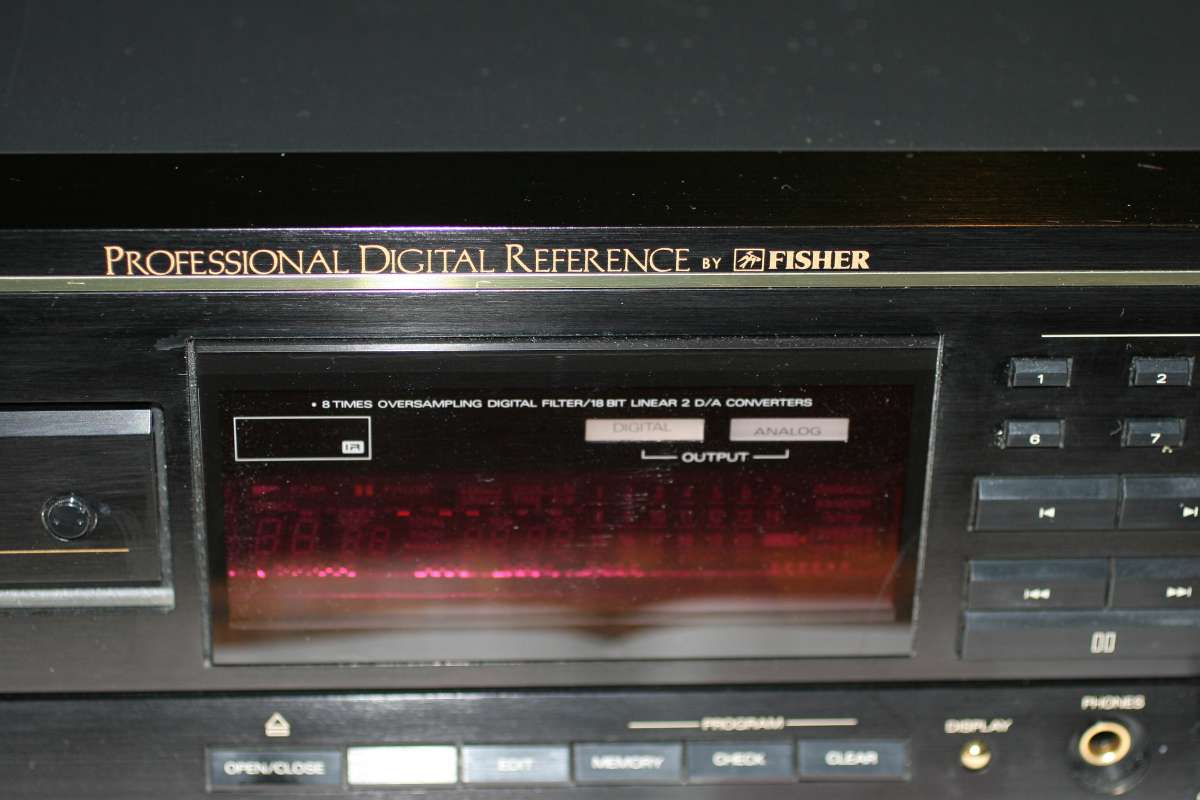

Whats inside
Fisher AD-Z1 ???
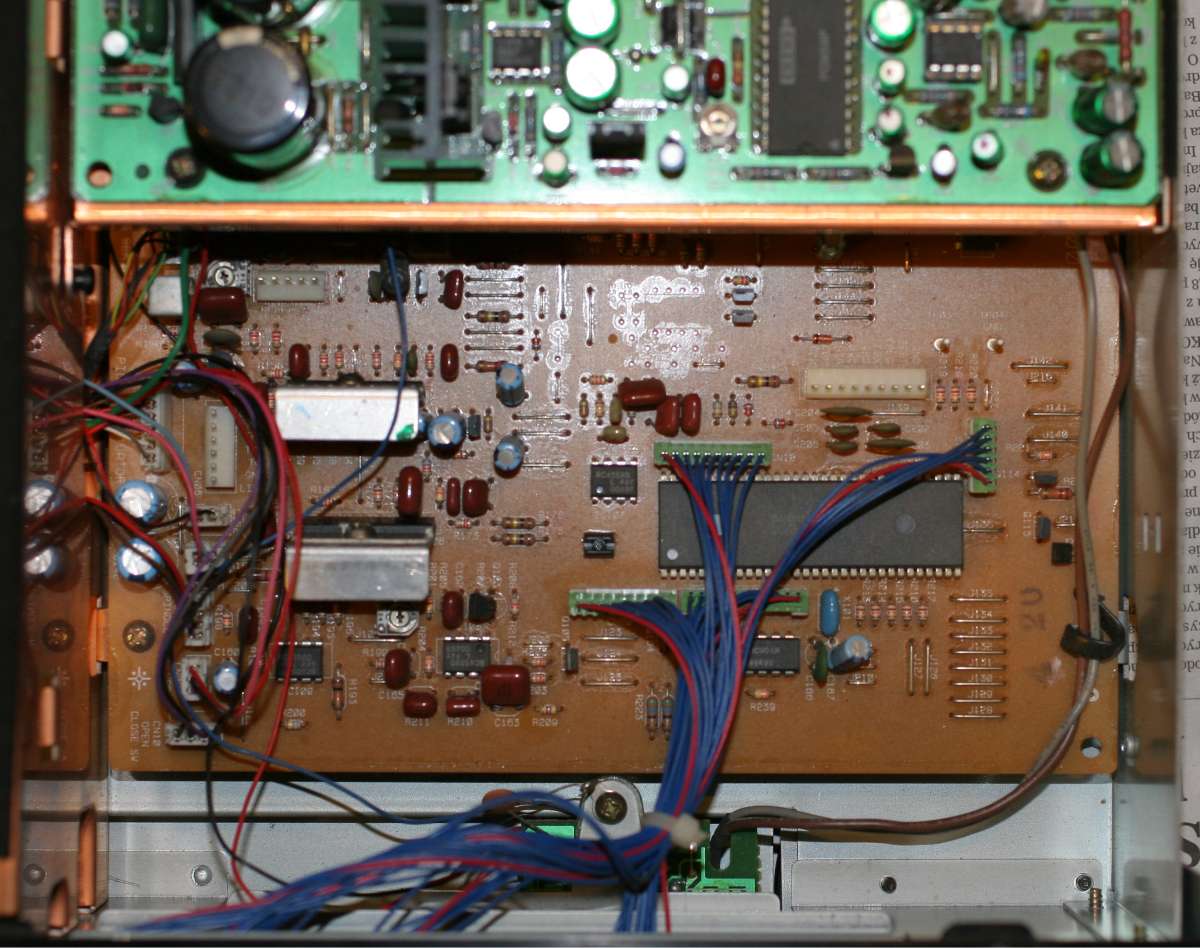
First - the good
things:
The looks : 9/10
The button
ergonomy: 10/10 !!!
The display :
8/10 (too small fonts)
Functions: 10/10
Drawer operation
- FAST - reading - FAST = 10/10
Inside - the
player makes first impression that there is less stuff than expected.
There is just 2 PCB's and a transformer and a mechanism.
The mechanism
and laser are both from Sanyo. Very interesting. Ir resembles Sony
Kss151A - with magnetic rails tracking, big laser pickup, and large
clamping arm. It is a pity the whole mechanism is fully plastic, unlike
Sony's kss190A. And I know sanyo mechanisms and lasers are good
(Shigaraki, CEC). So this may be an interesting transport.
Transformer is
not too small, but only one.

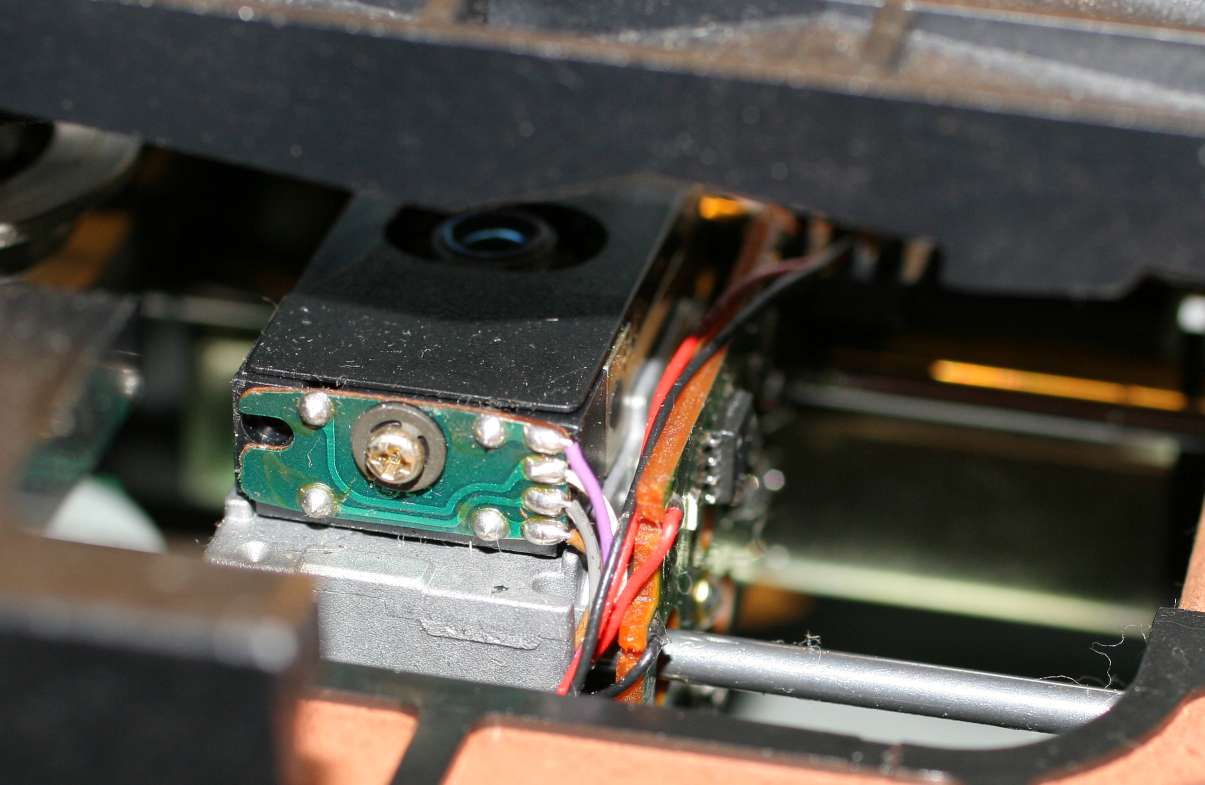
This is a very
nice laser pickup, but if it fails - god forbid - the owner will be in
deep you know what. It is very rare and probably no more New Old Stock
supplies.
The upper green
PCB is a DAC - dual mono PCM58 from Burr Brown. A nice DAC but from
middle class. It is not an aristocrat of DAC kingdom, worth big effort
of lampization. So it is good idea to make it a transport. The DAC
board can be unplugged and removed - it does NOT affect CD operation
and transport SP-DIF output.

The green PC has
positively a high end look and feel.
The DAC board is
different than the rest of electronics - I would say - it was better
made, by a better engineed with higher budget.

The green dac
consumed all the premium parts of this player. Nothing was left for the
lower brown board with digital part. It is like in the Titanic. Upper
deck takes all the lifeboats.
After removal of
the DAC PCB - what we are left with is a grown PCB with all digital
circuitry.
And here my
problem begins. This pcb looks really cheap and simple. No more premium
parts, no neat arrangements, nothing special. This is just a cheap
mediocre CD player PCB, which belongs in upper low class of players.
Something like Yamaha 480.
The
disproportion between the budget spent on the external look and
internal engineering is HUGE. Waaay out of balance.
Obviously this
series of Fischer gear (with CD, tape deck, amp, tuner) was made
for the nuveau-riche segment , not for audiophiles.
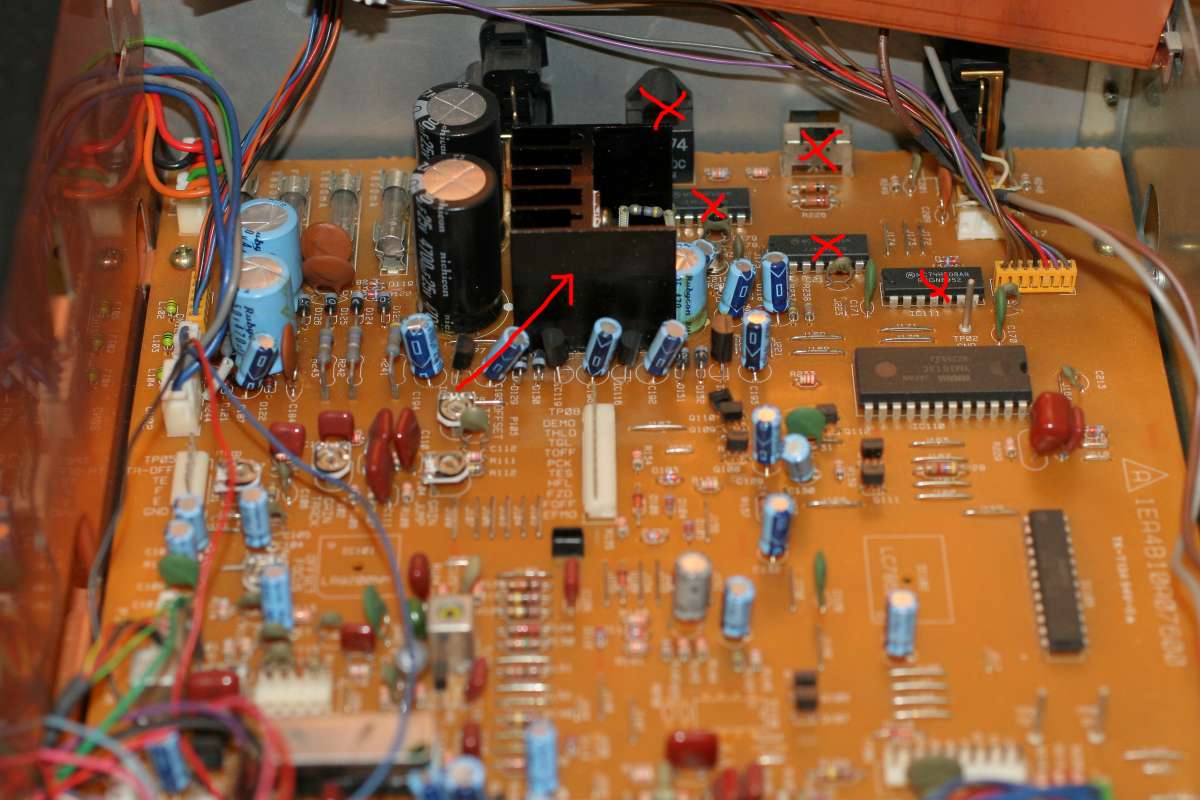
Arrow point to:
big black
heatsink for ONE regulator 7805. Yes! All player - motor,
laser, display, demodulator, digital filters, servo, microprocessor -
ALL of them share one common supply regulator. Horror usually
associated with 50 Euro players. How could they do it ?
The X sign
indicates the elements of S/PDIF output which I eliminated by bypassing
them. The 3 chips and the switch and Toslink - all had to go.
I installed new
RCA in the hole left by the removed Toslink transmitter.
The task - Killer
Transport
The stock trace
looks VERY GOOD. I am surprized. It is better than most. It already
sounds better than most players, including the heavy Marantz champions.
So after some
tweaking - it may be even great, who knows.
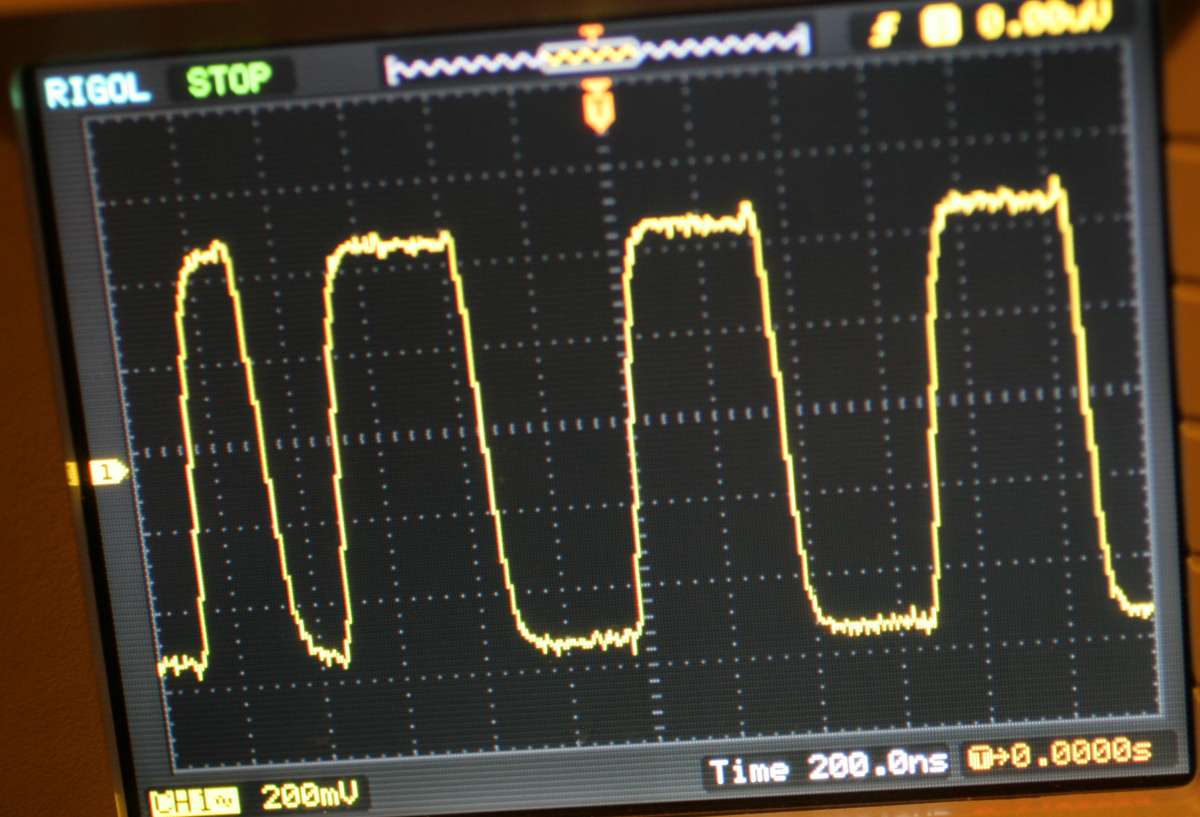
Above trace is
stock. After my clean up - it improved but very slightly. I have no
photo.
Looking at the
schematics - I see the digital S/PDIF signal going from the source -
Yamaha chip - to the output - via 3 other chips, a switch and a
transformer.
My plan:
1. To find the
s/pdif source.
2. To install
new RCA socket for s/pdif
3. To upgrade
power capacitor to the chip which producxes the s/pdif signal
4. to bypass all
circuitry between s/pdif source and the output RCA.
5. To install
superclock.
Later, we may decide to add a power sixpack just like in Fikus
Transport 1,0 and feed EVERY chip and function from separate regulator.

This is the key
chip Yamaha YM3613C - the one which forms biphase output called
S/PDIF (digital output to DAC)
Bingo ! I found
the perfect trace on leg 7th.

The small red arrow points to the pin number one which is +5V power
input. The new OSCON will be sitting on that input. There is only that
green ceramic there so I bent it slightly and soldered the oscon SEPC
series as a bypass of this green ceramic cap. Minus leg of the oscon -
closer to DAC.
Blue wire takes
directly the digital signal to the RCA. Yellow wire catches the nearest
ground point on the PCB. There is no more galvanic insulation of the
s/pdif. It is direct.
The Yamaha makes
a hell of a signal - very clean indeed. It was too high though - 5 Vpp.
So I added a parallel resistor of 75 Ohms which took the signal down to
below 1V. After the load of the DAC 75 Ohms again, the signal will be a
perfect 0,5 Vpp as should be.
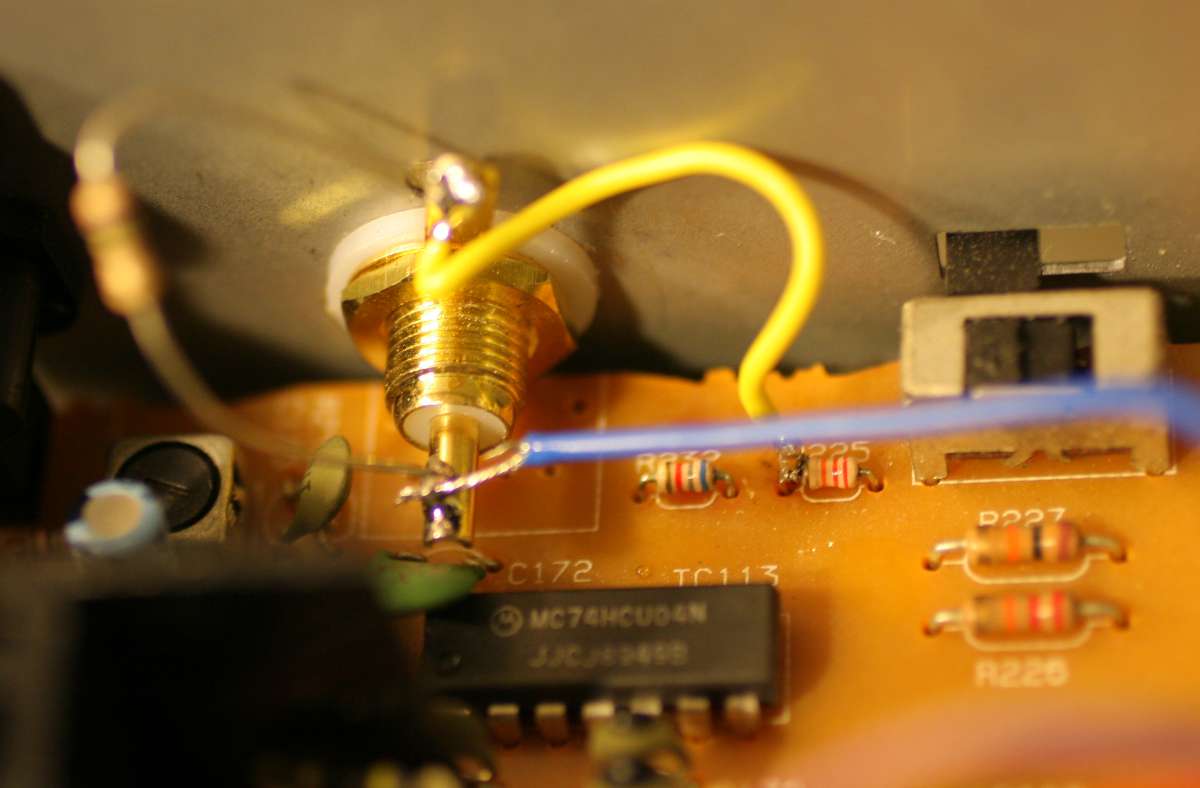
New RCA with 75
ohms in parallel. Later the resistor was cut to be short and neat.
CLOCK
I installed a Polish made clock MRelektronik from Lubin with OMIG 5ppm
resonator and own power supply and own transformer. The clock is 16,9
Meg like all Japan players.
On the below photo you see the quartz which I removed and two caps and
one resistor. The new clock has its output directly connected to leg 3
of the chip74HCU04.

The result:
1. The player
WORKS. Without the DAC board, witthout s/pdif forming chips
(de-forming) 3 of them succesfuly omitted.
2. The sound is
slightly better. It is not a night and day difference but every aspect
is a little bit better. Well worth trying.
After my mod of
SP/DIF bypass - the DAC would not play anymore - so beware - if you do
this - no more analog outputs.
On the other
hand - this DAC board can be recycled and used as standalone DAC with
good own supply.
















